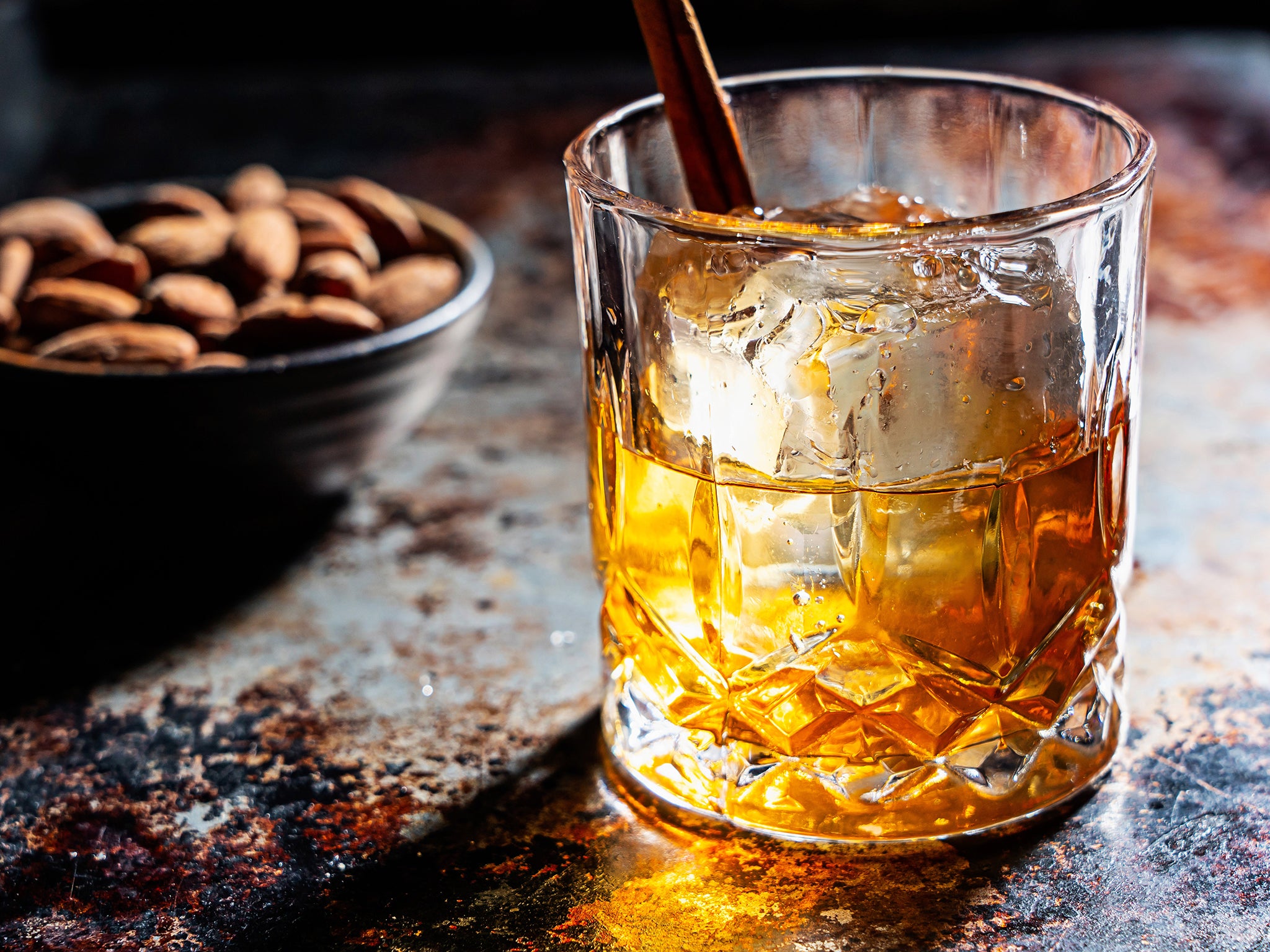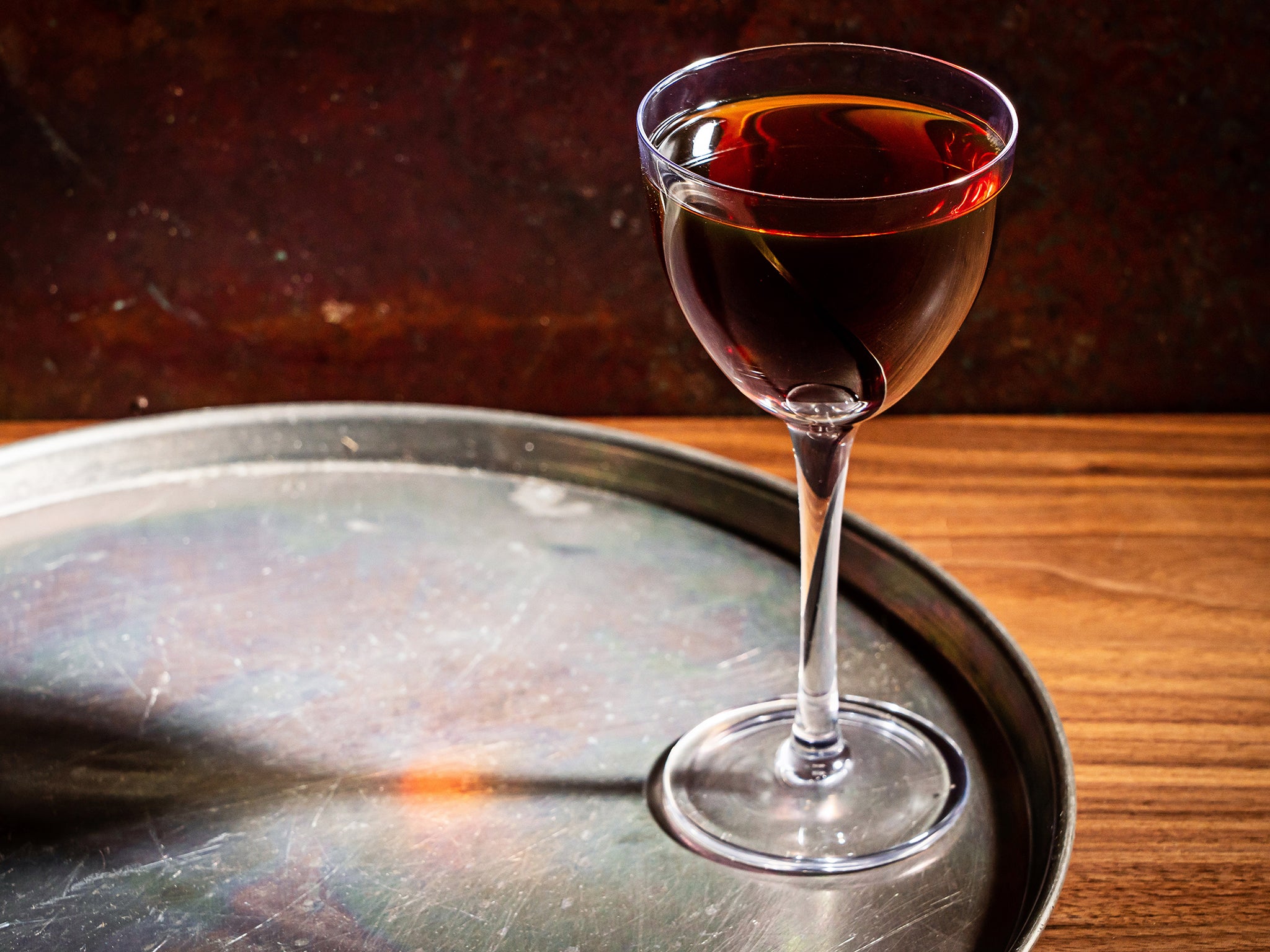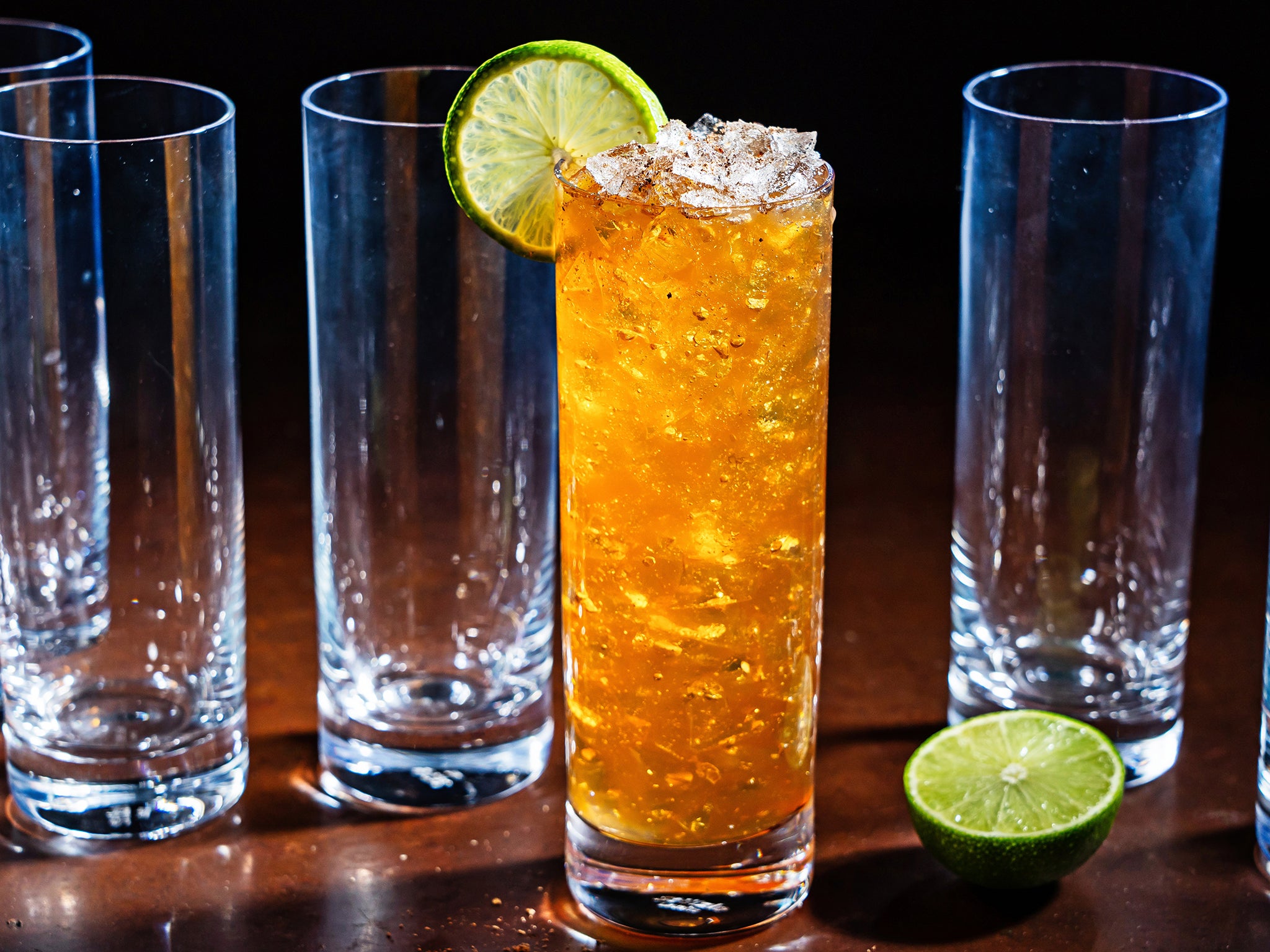
Here’s a little secret about the lives of cocktail writers: there are certain times when we open our email inboxes preparing to wince. We know what awaits: a pile of drink pitches themed around an upcoming holiday.
At least, this used to be a secret. Now we all kvetch about it on Twitter.
Booze writers who’ve been around a while may pine for yesteryear, when at least the holidays were real, by which I mean they were occasions that could be found on calendars during which festive drinking might organically occur. Now such holidays are few and far between, largely replaced by National Whatever Days, invented by a marketing cabal to sell you more Whatever.
The past month I’ve been staring down the shillelagh of an actual, real holiday. One wonders – as one hits the delete key next to a pitch for a drink garnished with Lucky Charms – how a fifth-century missionary known for bringing Christianity into Ireland and hurling the snakes out of it might feel about the paddywhackery with which his holiday is now feted in these parts. You know: the wearin’ o’ the green, the drinkin’ o’ the beers, the adoptin’ o’ the brogues, the drinkin’ o’ more beers, the regrettin’ o’ the behavior.
(By the way, shout-out to the PR rep who, a few years back, suggested that St Paddy’s was the perfect holiday to write about a new mezcal. That took real McChutzpah, as they call it back in the auld country.)
An Irish derivative myself, I manage some guilty enjoyment of our debased St Paddy’s celebrations. I will miss them particularly this third year of not decamping to a chockablock pub to raise a pint. But I am ever willing to drink good whiskey in the name of service journalism, even if I’ll be doing it safely at home during the traditional bingin’ o’ the Netflix.
Here’s something you should know if you’re going to use this quieter St Paddy’s to graduate from shots of Jamo with 500 of your closest friends: you will still encounter, here and there, cocktail recipes that call for “Irish whiskey” as an ingredient. And if your goal is simply celebrating all things Hibernian, fine. Many subtleties of spirits do disappear in drinks, and individual palates may be more or less sensitive to such subtleties.
But these days, with the Irish whiskey category going through a serious boom and more whiskeys making their way onto the market, a cocktail recipe calling for “Irish whiskey” can be a bit like a food recipe calling for “herbs”. Imagine the result of substituting cilantro for tarragon in your Béarnaise sauce. While the majority of the tippling public tends to see the category through the lens of one or two famous brands, Irish whiskey is not just one thing.
The character of Irish whiskey “doesn’t come from the commonly noted identifiers of the category, because every one of them has exceptions,” writes whiskey writer Lew Bryson in his excellent 2020 book, Whiskey Master Class.
“Triple distilled? Not all of them. Unpeated? There are a few exceptions. Uses unmalted barley? Certainly not the Irish single malts; and they’re not blended either – another identifier you might hear,” he writes. Bryson lands on the notion that one common characteristic of Irish whiskies is their approachability, an almost universal friendliness that contrasts with some of the aggressive whiskeys that hail from other places.
As the category continues to rebound, Irish whiskey may become even more varied. In 1976, points out Robert Caldwell, a brand ambassador for Teeling – one of the families and distilleries most responsible for the ongoing reinvention and rejuvenation of Irish whiskey – there were two distilleries in Ireland, four by 1993. In 2015, when Teeling opened its distillery in Dublin, there were about six. “Five short years later, there are 38,” Caldwell says.
Who knows how all those new makers will affect the category?
One of the most common descriptors applied to Irish whiskey, thanks to the triple-distillation common, is “smooth”. Smoothness is appealing in whiskeys intended for drinking neat, but that very affability may have led Irish whiskey to have been a bit neglected in the cocktail renaissance, as bartenders sought spirits that stood out and held their own amid a roster of other ingredients. Caldwell notes how often he’s heard people suggest that Irish whiskey gets “washed away” in cocktails.
That may be true of some of the best-known brands, but “in the resurgence, we’re seeing stronger Irish whiskeys,” Caldwell points out, along with various experiments with cask finishes and other tinkerings. And yet, he says, “lots of people still look at all Irish whiskeys as one green brand. We have a large job to do to remind people of the broad spectrum of flavors.”
That will probably be a matter of time, as newer arrivals find their fans. Irish whiskey has to be at least three years old, so many of the newcomers have had to launch with stocks of purchased whiskey, funding their futures with juice originally distilled by others. Now, though, “it’s been five-plus years that they’ve been making whiskey, so they can finally start releasing them,” says Jillian Vose, beverage director at the much-lauded Irish bar the Dead Rabbit in New York. “That’s what’s so exciting right now. We’re starting to see Teeling and others starting to release their own liquid.”
Vose notes that education is a major component of the work the Dead Rabbit team does with new bartending staff, to help them understand the styles of whiskey in the category. “In creating cocktails, you need to understand the ingredients that go into them,” Vose says. “You wouldn’t just say, ‘This drink calls for Irish whiskey,’ and expect that Powers would work the same way Redbreast would. That’s not the case. One is pot still Irish whiskey that has a heavy sherry influence and the other is a blend with a pot still and grain component. You need to understand the category to pick the right one.”
It’s that kind of understanding that can take Irish whiskey cocktails in unexpected directions. In creating her tiki-inflected Grace O’Malley cocktail around Knappogue Castle’s 14-year-old single malt (aged in ex-bourbon and ex-sherry casks), bar consultant Ezra Star played off the spirit with notes of almond and coffee. “I was thinking, ‘How do I make the spirit taste even better, take all the elements and express the core of what it is?’” she explains. “Whiskey has so much going on and so much complexity that you can add a little more to it to bring out flavors that aren’t necessarily there on its own, and still the spirit shines through.”
The particularities of individual Irish whiskeys are a major focus of the Dead Rabbit’s upcoming book that Vose co-wrote. “Paddy Drinks: The World of Modern Irish Whiskey Cocktails,” scheduled for release in early 2022, will showcase the versatility of the category, aiming to explain the range of whiskeys by delving into their raw ingredients, production styles and cask finishes, to help drive the right whiskey into the right drink.
As I watch the category’s ongoing growth, I will be paying more attention to which standout Irish sipping whiskeys might migrate best into particular cocktails. I know I won’t always nail the perfect combination, but I’m confident that it’ll still be better than the recipe for a Colcannon-tini that I fear, even now, is somewhere in my inbox.

The Newmarket Fashioned
1 serving
A boozy old-fashioned riff served at the Bang Bang Bar at the Teeling Distillery in Dublin, the Newmarket Fashioned is named for a famous square in the city that was once the centre of the grain trade for area distilleries. The spice syrup is very flexible – use whatever combinations you like – and designed to highlight, rather than obscure, the whiskey.
Make ahead: The spice syrup needs to be made and chilled at least 1 hour before you plan to make the drink.
Storage notes: The spice syrup can be refrigerated for up to 2 weeks.
Ingredients
For the spice syrup:
1 cup (240ml) water
1 cup (210g) demerara sugar (may substitute with Turbinado or light brown sugar)
¼tsp ground cinnamon
¼tsp ground cloves
¼tsp ground allspice
1tsp grated dark chocolate (optional)
For the drink:
Ice, preferably one large cube and small regular cubes
2½oz Teeling Small Batch Irish whiskey
½oz spice syrup
2 dashes Angostura bitters
Cinnamon stick, for garnish
Directions
Make the syrup: in a small saucepan over medium heat, combine the water, sugar, cinnamon, cloves, allspice and chocolate (if using), stirring to mix. Bring to a boil, and cook at a rapid boil for 30 seconds, then remove from the heat and let cool completely.
Make the drink: add the large ice cube in a rocks glass. Add ice cubes to a mixing glass, then follow with the whiskey, spice syrup and bitters and stir briefly to combine. Strain into the rocks glass and garnish with the cinnamon stick.
Nutrition | Calories: 192; Total Fat: 0 g; Saturated Fat: 0 g; Cholesterol: 0 mg; Sodium: 2 mg; Total Carbohydrates: 8 g; Dietary Fiber: 0 g; Sugar: 8 g; Protein: 0 g.
Recipe from Robert Caldwell, brand ambassador and bartender at the Bang Bang Bar at Teeling Whiskey Distillery, Dublin.

Irish coffee martini
1 serving
This drink from Jillian Vose of the Dead Rabbit in New York City melds Irish coffee with the espresso martini for an invigorating tipple. You can make your own cold brew or use an unsweetened commercial variety. Demerara sugar, a darker variety with molasses notes, is available at many grocery stores, but you can substitute turbinado or regular light brown sugar in making this thicker, richer version of simple syrup. Vose likes Bushmill’s Black Bush (a sherry-casked blend) for the whiskey, but the recipe will work fine with others.
Make ahead: The syrup needs to be made and chilled at least 1 hour before making the drink.
Storage: The syrup can be refrigerated for up to 1 month.
Ingredients
For the rich simple syrup:
2 cups (420g) demerara sugar
1 cup (8oz/240ml) water
For the drink:
Ice
1 dash aromatic bitters, such as Angostura bitters
½oz rich simple syrup
1½oz cold brew coffee concentrate
1½oz Bushmill’s Black Bush or another Irish whiskey
Lemon peel, for garnish
Directions
Make the rich simple syrup: in a medium saucepan over medium heat, combine the sugar with water, and stir to dissolve the crystals. Bring to a boil, and cook at a rapid boil for about 30 seconds, then remove from the heat and let cool completely. Refrigerate until cold, at least 1 hour.
Make the drink: chill a Nick and Nora glass or coupe. Fill a cocktail shaker with ice, then add the bitters, syrup, cold brew and whiskey. Shake, then double-strain into the chilled glass.
Garnish with lemon oil by expressing a swath of peel over the drink, then discard the peel and serve.
Nutrition | Calories: 170; Total Fat: 0 g; Saturated Fat: 0 g; Cholesterol: 0 mg; Sodium: 2 mg; Total Carbohydrates: 16 g; Dietary Fiber: 0 g; Sugar: 16 g; Protein: 0 g.
Recipe from Jillian Vose, beverage director at the Dead Rabbit in New York.

Grace O’Malley
1 serving
Named for a famous 16th century female Irish pirate, the Grace O’Malley cocktail uses coffee and almond flavors as a reflection of valuable trade goods of the time. The whiskey, citrus and orgeat create an unusual tiki-inspired drink designed around Knappogue Castle’s 14-year-old single-malt whiskey.
Make ahead: The simple syrup needs to be made and chilled at least 1 hour before you plan to make the cocktail.
Storage: The simple syrup can be refrigerated for up to 1 month.
Where to buy: Orgeat, an almond-based syrup, is available at many liquor stores and online.
Ingredients
For the simple syrup:
1 cup (200g) granulated sugar
1 cup (240ml) water
For the drink:
Crushed ice
1½oz Knappogue Castle 14-Year-Old Single Malt Irish whiskey
1oz coffee liqueur, such as Kahlua or Mr. Black
¾oz orgeat
½oz fresh lemon juice
½oz simple syrup
Grated nutmeg, for garnish
Lime wheel, for garnish
Directions
Make the simple syrup: in a small saucepan over medium heat, combine the sugar with the water and stir until the sugar is dissolved. Let the syrup come to a boil, and cook at a rapid boil for about 30 seconds, then remove from the heat and let cool. Refrigerate until cold, at least 1 hour.
Make the drink: fill a highball glass with crushed ice. In a cocktail shaker, combine the whiskey, liqueur, orgeat, lemon juice and simple syrup and shake without ice. Pour over the crushed ice, and top off with more crushed ice to make a mound. Add a lime wheel, grate some nutmeg over the top and serve.
Nutrition | Calories: 231; Total Fat: 0 g; Saturated Fat: 0 g; Cholesterol: 0 mg; Sodium: 1 mg; Total Carbohydrates: 26 g; Dietary Fiber: 0 g; Sugar: 22 g; Protein: 0 g.
Recipe from bartender Ezra Star, formerly of Drink in Boston, now a traveling bartender/consultant.
© The Washington Post







